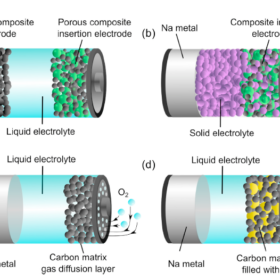
International researchers have analyzed the potential of sodium-based energy storage and found recent technical advances have arrived faster than those for the lithium-ion batteries which have been studied for three decades. Issues remain, however, before sodium constitutes a complementary option to lithium.
Scientists from European institutions have sought to assess whether sodium-ion batteries (NIBs) could represent a complementary option to lithium-ion devices.
The researchers, from the University of Warwick, in the U.K.; Germany’s Helmholtz Institute Ulm and Humboldt University Berlin; French institutions the College de France, Université de Picardie Jules Verne and University of Bordeaux (France); the Institute for Energy Technology, in Norway; and Spain’s CIC energiGUNE, presented their findings in the paper Challenges of today for Na-based batteries of the future: From materials to cell metrics, published in the Journal of Power Sources and on the ScienceDirect website.
The group analyzed electrode materials and electrolyte systems in sodium-ion devices and extrapolated performance metrics and indicators. “The ongoing development [of] the present best materials available for Na-ion [sodium-ion] cells should allow approaching the energy density of the present generation of Li-ion [lithium-ion] commercial cells,” the paper stated. The researchers said the development of positive electrode materials for NIBs has experienced rapid growth due to the insight gained from the chemistry developed for lithium-ion batteries.
Layered oxides, polyanionic compounds and Prussian blue analogues (PBAs) were highlighted as the most promising materials for positive electrodes and the advantages and challenges of the three families of material were assessed in terms of energy density, rate capability, cyclability, cost and sustainability.
The academics also analyzed five classes of materials for insertion-based negative electrodes, including carbon and titanium-based oxides, alloying compounds, conversion-type materials and mixed alloying-conversion systems.
Sodium-ion devices may show most promise for stationary energy storage, according to the paper. “In this field, sodium-ion batteries have the potential to dominate the future market, representing the most promising system to fill the gap between energy production and utilization by securing energy supply,” said research co-author, Ivana Hasa. “However, high-power applications in the electrified automotive field are a potential niche field application for NIBs.”
Sodium-air batteries (Na/O2) sodium-sulfur storage (Na/S) technology and all-solid-state sodium batteries (Na-ASSBs) were mentioned as other promising, sodium-based storage solutions. “However, despite important advancements, their technological readiness level is still far from application,” the paper noted. “At the present moment, only NIBs can be considered as serious contenders to LIBs [lithium-ion batteries], with the potential to become the paradigm of green, safe, sustainable and low-cost energy storage technologies of the future.”
The researchers, who noted more work is required to raise the high-voltage, capacity, lifetime and efficiency performance of sodium-ion devices, also conducted preliminary life-cycle assessments of the competing storage technologies and concluded sodium-ion batteries offer several ecological benefits compared to lithium devices.
Lắp đặt điện mặt trời Khải Minh Tech
https://ift.tt/2X7bF6x
0906633505
info.khaiminhtech@gmail.com
80/39 Trần Quang Diệu, Phường 14, Quận 3
Lắp đặt điện mặt trời Khải Minh Tech
https://ift.tt/2ZH4TRU
Không có nhận xét nào:
Đăng nhận xét